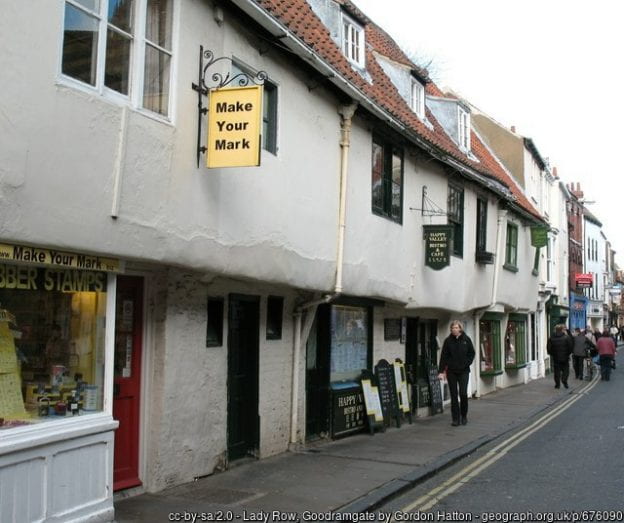Human minds being the odd, pattern-seeking, things they are, I expect that this one leapt out at me today because I am a little preoccupied with a recorded interview I am doing on Monday, for a podcast about rape and sexual consent. The entry is not just about sexual offences, though, but also about the composition of defences to homicide, and, perhaps, master-servant and more positive male-female interactions as well.
The entry relates to a case at a York gaol delivery session on Sat 27th July, 1364.[i] John de Skydbrok of York, had been indicted and arrested for having feloniously killed John Dees, tailor, on the night of Monday 17th July 1363. in Goodramgate, York. He pleaded not guilty and the case was tried by a jury. The jury said that things had gone like this on the day in question: John Dees came to John de Skydbrok’s house, in order to have sex with a female servant (ancilla) of JS. She had made a great noise, which had brought JS into the room where it was happening, and there ensued a classic ‘self defence fight’ in which JS ends up in a corner, and with a choice between being killed by JD’s knife, or defending himself with his own knife (having done nothing at all aggressive up to this point). Having drawn his knife, JS struck JD once in the chest, and JD died. The jury stated that the killing had occurred in self defence rather than with malice aforethought, so unsurprisingly, JS was sent off to prison to await a pardon (and this duly came).[ii]
The self defence story is all very stereotyped, but the prelimnary events are a bit more interesting. The description of the encounter between John Dees and the ancilla is not termed a rape or attempted rape, but volition is mentioned on JD’s side and objection on the ancilla’s side. I think we can rule out the idea that the noise mentioned was enthusiastic participation – it is clamor, which is exactly what a respectable woman is supposed to emit, when protesting against a rape or other attack. Note the response of John de Skydbrok: the jury says that he came in, from his part of the house, ‘to make peace’, or ‘to calm things down’. No doubt things are put this way in order not to contradict the self-defence narrative of one-sided violence. This, perhaps, is an instance of the accepted narrative of self-defence in fact effacing what we would see as commendable behaviour – intervening to help a servant, whether protecting her as a person or as an asset. If there was not any force on JS’s part, it does not really make sense that JD would attack him. If JS was so very pacific, surely making a run for it would have been the sensible option.
Medieval gender relations and sexual misconduct meeting the distorting filters of legal procedure and jury practice; intriguing and frustrating as ever.
GS
23/4/2021
[i] JUST 3/95 m. 43 (AALT IMG 97)
[ii] CPR 1364-7 p. 27.
